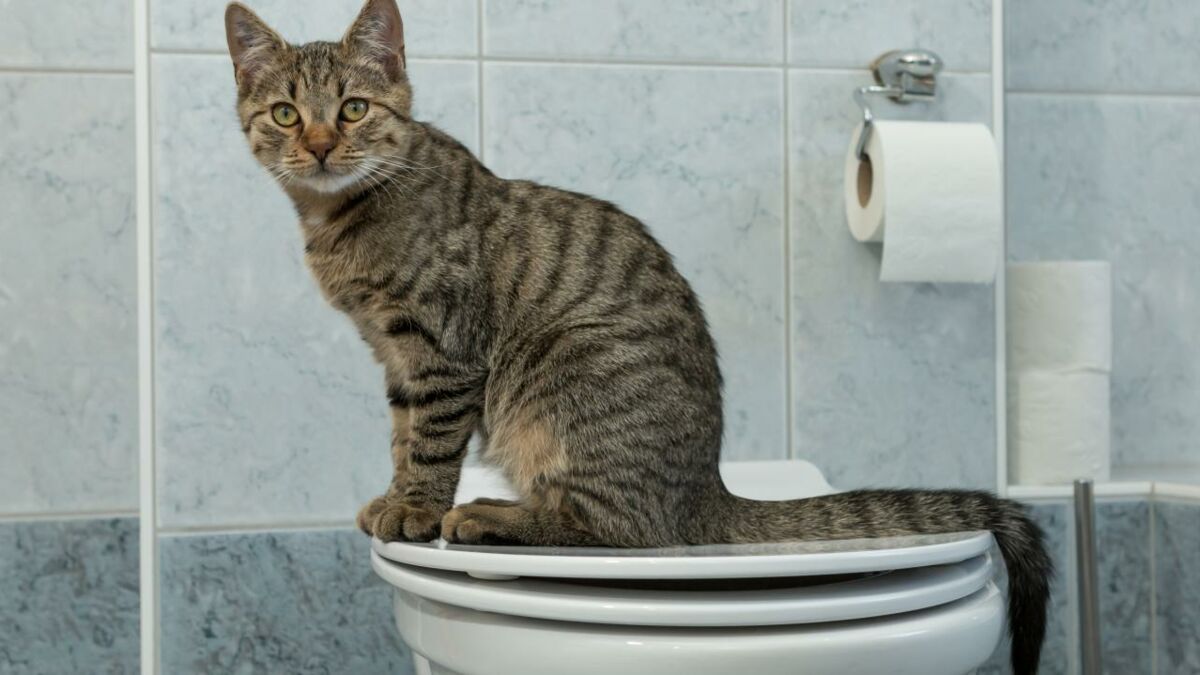The Consequences of Flushing Cat Poop Down Your Toilet - Protect Your Plumbing
The Consequences of Flushing Cat Poop Down Your Toilet - Protect Your Plumbing
Blog Article
Are you currently interested in advice around How to Dispose of Cat Poop and Litter Without Plastic Bags?

Introduction
As cat owners, it's important to bear in mind exactly how we dispose of our feline friends' waste. While it might appear practical to flush feline poop down the toilet, this technique can have destructive effects for both the atmosphere and human health and wellness.
Alternatives to Flushing
Fortunately, there are more secure and a lot more accountable ways to throw away cat poop. Take into consideration the complying with options:
1. Scoop and Dispose in Trash
One of the most typical method of throwing away cat poop is to scoop it into a naturally degradable bag and toss it in the trash. Make sure to make use of a devoted trash inside story and deal with the waste immediately.
2. Usage Biodegradable Litter
Go with eco-friendly cat litter made from materials such as corn or wheat. These clutters are environmentally friendly and can be securely thrown away in the garbage.
3. Hide in the Yard
If you have a backyard, take into consideration hiding feline waste in an assigned area away from vegetable gardens and water sources. Be sure to dig deep sufficient to prevent contamination of groundwater.
4. Install a Pet Waste Disposal System
Buy a pet dog garbage disposal system specifically designed for feline waste. These systems make use of enzymes to break down the waste, minimizing odor and environmental influence.
Health and wellness Risks
Along with environmental worries, flushing feline waste can additionally position wellness risks to people. Pet cat feces may contain Toxoplasma gondii, a parasite that can create toxoplasmosis-- a potentially severe illness, specifically for expectant ladies and people with weakened body immune systems.
Ecological Impact
Flushing pet cat poop presents hazardous microorganisms and parasites right into the supply of water, posturing a considerable danger to marine communities. These pollutants can adversely influence aquatic life and compromise water quality.
Conclusion
Accountable animal ownership prolongs beyond supplying food and shelter-- it likewise includes appropriate waste administration. By refraining from flushing pet cat poop down the commode and going with different disposal techniques, we can reduce our environmental impact and shield human health and wellness.
Why Can’t I Flush Cat Poop?
It Spreads a Parasite
Cats are frequently infected with a parasite called toxoplasma gondii. The parasite causes an infection called toxoplasmosis. It is usually harmless to cats. The parasite only uses cat poop as a host for its eggs. Otherwise, the cat’s immune system usually keeps the infection at low enough levels to maintain its own health. But it does not stop the develop of eggs. These eggs are tiny and surprisingly tough. They may survive for a year before they begin to grow. But that’s the problem.
Our wastewater system is not designed to deal with toxoplasmosis eggs. Instead, most eggs will flush from your toilet into sewers and wastewater management plants. After the sewage is treated for many other harmful things in it, it is typically released into local rivers, lakes, or oceans. Here, the toxoplasmosis eggs can find new hosts, including starfish, crabs, otters, and many other wildlife. For many, this is a significant risk to their health. Toxoplasmosis can also end up infecting water sources that are important for agriculture, which means our deer, pigs, and sheep can get infected too.
Is There Risk to Humans?
There can be a risk to human life from flushing cat poop down the toilet. If you do so, the parasites from your cat’s poop can end up in shellfish, game animals, or livestock. If this meat is then served raw or undercooked, the people who eat it can get sick.
In fact, according to the CDC, 40 million people in the United States are infected with toxoplasma gondii. They get it from exposure to infected seafood, or from some kind of cat poop contamination, like drinking from a stream that is contaminated or touching anything that has come into contact with cat poop. That includes just cleaning a cat litter box.
Most people who get infected with these parasites will not develop any symptoms. However, for pregnant women or for those with compromised immune systems, the parasite can cause severe health problems.
How to Handle Cat Poop
The best way to handle cat poop is actually to clean the box more often. The eggs that the parasite sheds will not become active until one to five days after the cat poops. That means that if you clean daily, you’re much less likely to come into direct contact with infectious eggs.
That said, always dispose of cat poop in the garbage and not down the toilet. Wash your hands before and after you clean the litter box, and bring the bag of poop right outside to your garbage bins.
https://trenchlesssolutionsusa.com/why-cant-i-flush-cat-poop/

I discovered that piece on Can You Flush Cat Poop Down The Toilet? while doing a lookup on the web. Sharing is caring. Helping people is fun. Thank-you for going through it.
Click Here Report this page